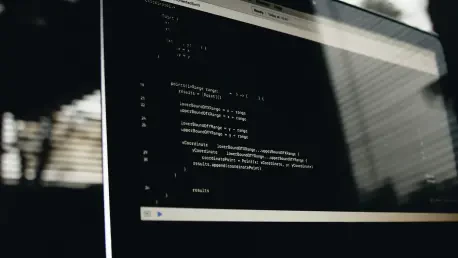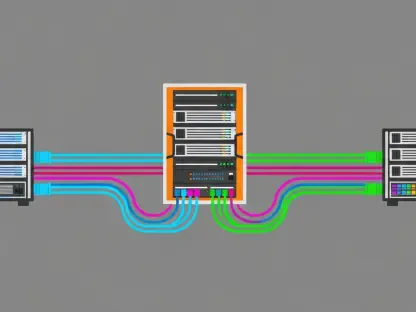In the digital age, the proliferation of online misinformation and disinformation poses a significant threat to public discourse and democratic processes. With information becoming easily accessible and shared at an unprecedented rate, the challenge lies in distinguishing factual content from fabricated narratives. Internet users encounter misleading information daily, which can often lead to public confusion, harm, or even political instability. This pressing challenge has mobilized a global response, particularly from media entities and non-profit organizations, to address and mitigate the consequences of disinformation. A leading initiative in this endeavor is being spearheaded by Brazil’s Institute for the Development of Journalism, commonly known as Projor. Projor has launched the second phase of a project aimed at curbing disinformation through innovative digital tools. These tools, classified under the Codesinfo initiative, are open-source solutions being developed by Brazilian media organizations. They are designed not only for local deployment but for international adoption, broadening the scope and impact of the initiative. By late 2024, these five tools are expected to fortify the efforts of journalistic entities worldwide, fostering an ecosystem where verifiable and truthful information triumphs over misrepresentations. Each tool addresses a unique aspect of journalism, ranging from transparency and fact-checking to data consistency and audience engagement through multimedia content. This open-source approach is gaining traction as a collaborative effort to tackle one of the most pervasive issues of the digital era.
Integrating Transparency and Credibility into Journalism
Transparency has emerged as a cornerstone in modern journalism, essential for building trust between media outlets and their audiences. Media credibility often hinges on the perceived transparency of reporting and the accessibility of information regarding authorship and content creation. “Quem Disse?” plays a pivotal role in enhancing this aspect by being a transparent window into the journalists’ profiles responsible for the content. Developed as a WordPress plugin by Folha do Mate, “Quem Disse?” provides readers with crucial insights into journalists’ credentials, their focus areas, and the breadth of their professional experiences. This localized initiative from Brazil’s Rio Grande do Sul region allows consumers of news to engage critically with content, having the necessary context about who is disseminating information. Through this approach, misinformation can be curtailed, and informed decision-making promoted.
Another tool featured in the Codesinfo suite is “Check-up,” which fortifies fact-checking processes by scrutinizing advertising. Developed by Aos Fatos, this tool primarily targets disinformation in health-related advertisements across prominent Brazilian platforms. Advertisements can often cloak themselves in journalistic credibility to disseminate false claims, thus impacting public perception. “Check-up” tackles this by integrating automation for the observation and categorization of content alongside manual fact-checking approaches. The hybrid system is designed to efficiently handle the vast swathes of health information presented to the public, diminishing the spread of falsehoods that can thrive through native advertising techniques. By addressing industries that frequently target vulnerable populations with misinformation, this tool holds the potential to recalibrate how information is consumed and trusted by audiences worldwide.
Leveraging Artificial Intelligence and Multimedia
Artificial intelligence continues to revolutionize various facets of journalism, particularly in the realm of generating content that is both engaging and enlightening. “Capí” demonstrates an innovative application of AI within the Codesinfo package. This climate-oriented chatbot leverages AI to deliver reliable, science-backed responses about climate and environmental issues. Operating from a trusted database that includes credible scientific sources such as reports from the Intergovernmental Panel on Climate Change (IPCC), Capí answers queries with precision and authority. Its design allows media organizations to transform complex scientific data into accessible information for the broader public, ensuring that accuracy is maintained even in widespread dissemination. This effort aligns with a growing acknowledgment that comprehensive knowledge about climate change must assume a vital role in societal education and debate.
The demand for visually engaging content continues to rise, with video consumption dominating the digital landscape. “Mosaico,” a tool developed by Folha de S.Paulo, attends to this demand by converting text-based articles into short-form video content using AI. This tool recognizes the increasing preference for visual storytelling, especially among younger audiences. Mosaico stands out by maintaining journalistic integrity through internal monitoring mechanisms that oversee content authenticity and accuracy. By providing an innovative pathway to diversify content engagement, media outlets can broaden their audience reach without compromising on credibility. As digital content consumption habits shift toward video formats, tools such as Mosaico are essential to meet audience expectations while sustaining journalistic ethics.
Maintaining Consistency and Addressing Misinformation Contextually
Consistent and up-to-date context in reporting is crucial in maintaining journalistic integrity and preventing misinformation. “Xarta,” developed by Núcleo Jornalismo, specifically addresses this necessity within the Codesinfo framework. The tool integrates embeddable cards into news articles, thereby ensuring that any changes or developments in the story’s backdrop are dynamically updated. This consistent contextualization not only aids in the fight against misinformation but also preserves the article’s relevance across its lifecycle. By doing so, media outlets can avert instances where outdated contexts inadvertently fuel unfounded narratives or misinform the public based on superseded developments. In an age where digital content is incessantly revised and reshared, tools like Xarta are indispensable for maintaining the sync between information dissemination and truth.
The proactive narrative manipulation enabled by these tools ultimately aligns with mitigating one of the primary assaults against credible journalism—the distribution of arbitrarily edited or deceptively repurposed content. This suite of tools collectively encapsulates various domains where disinformation can mar journalistic endeavors, asserting that through consistency and comprehensive contextualization, media firms can safeguard the integrity of their information.
Exploring the Open-Source Advantage and Future Trajectories
The open-source nature of Codesinfo tools is one of the initiative’s most compelling aspects, offering myriad advantages that extend beyond mere cost-effectiveness. These tools empower journalistic institutions globally not just to adopt existing software but to innovate upon it, customizing applications to their unique operational contexts. The adaptability inherent in open-source programs fosters an environment ripe for collaboration, where developers across borders can iterate on solutions that dynamically respond to evolving disinformation tactics. With open-source options, there’s greater flexibility in refining methodologies that can effectively parry new and unpredictable waves of digital falsehoods.
The sustainable orientation of the Codesinfo initiative adds a layer of conscientiousness toward the broader impacts of technology. Capí, for instance, reflects a commitment to environmentally-sensitive practices by optimizing server usage, which significantly reduces carbon footprints inherent in AI operations. This consideration of sustainable development emphasizes an evolving imperative in tech deployment, where environmental impacts are keenly accounted for in concert with technological advances.
Beyond the immediate tactical gains from Codesinfo, the initiative underscores a broader alignment with global journalistic ethics. These tools provide a robust framework from which credible news organizations can reaffirm their societal roles as keystones in public education and trustworthy information dissemination. As disinformation tactics grow more sophisticated, the vigilant adoption of innovative, open-source technologies shall indisputably remain a foundational approach in combating misinformation worldwide.
Emerging technologies not only bolster the immediate battle against misinformation but also prelude future potential where journalism can be seamlessly integrated with avant-garde tech solutions. This trajectory heralds an era where media continues to serve as a vanguard of factual communication in an increasingly complex information landscape. Through pooling resources, media houses can ensure adaptive resilience against the deceptive narratives that challenge society’s collective understanding.
Navigating Next Steps in the War Against Disinformation
In today’s digital era, the rampant spread of misinformation and disinformation online is a significant threat to public discourse and democratic processes. With information now more accessible and shareable than ever, the challenge is identifying truth amidst fabricated stories. Daily, internet users are confronted with misleading content, which can result in confusion, harm, or political tension. This critical challenge has prompted a global response, particularly from media organizations and non-profits, to minimize the impact of disinformation. A prominent effort in this arena is led by Brazil’s Institute for the Development of Journalism, known as Projor. Projor has initiated the second phase of an ambitious project to combat disinformation using new digital tools. Under the Codesinfo initiative, they are developing open-source solutions with Brazilian media partners. These tools are meant for both local use and international application, expanding their influence. By late 2025, these five tools will support global journalistic efforts, fostering an environment where accurate information wins over falsehoods. Each tool tackles specific journalism aspects, from ensuring transparency and fact-checking to maintaining data consistency and engaging audiences with multimedia content. This open-source strategy is emerging as a global collaboration to address a pressing issue of the digital age.









